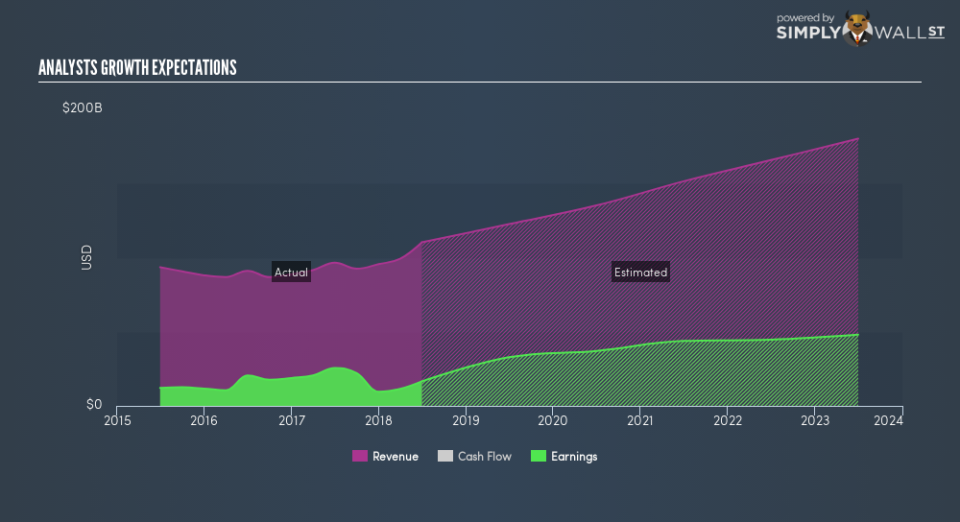Why Are Insiders Bearish About Microsoft Corporation’s (NASDAQ:MSFT) Stock?

Microsoft Corporation develops, licenses, and supports software, services, devices, and solutions worldwide. Microsoft’s insiders have divested from 442.88k shares in the large-cap stock within the past three months. It is widely considered that insider selling stock in their own companies is potentially a bearish signal. A research published in The MIT Press (1998) concluded that stocks following insider selling fell 2.7% compared to the market. However, it may not be sufficient to base your investment decision merely on these signals. I’ve assessed two potential reasons behind the insiders’ latest motivation to sell their shares.
Check out our latest analysis for Microsoft
Which Insiders Are Selling?
Over the past three months, more shares have been sold than bought by Microsoft’s insiders. In total, individual insiders own over 106.36 million shares in the business, which makes up around 1.39% of total shares outstanding. Latest selling activities involved the following insiders: Christopher Capossela (management and board member) , Jean-Philippe Courtois (management) , Margaret Johnson and Satya Nadella (management) .
Does Selling Activity Reflect Future Growth?
At first glance, analysts’ earnings expectations of 172.26% over the next three years illustrates a spectacular outlook for the business. However, this is inconsistent with the signal company insiders are sending with their net selling activity. Delving deeper into the line items, analysts anticipate a double-digit top-line growth over the next year, which appears to flow through to larger earnings growth expectations. This may mean the company is reaping meaningful benefits from past growth initiatives, placing it in a beneficial position for future profits. Yet insiders’ selling action seem to contradict this optimistic earnings outlook which means they may perceive things differently to the market. They may deem the high growth is not sustainable or positive sentiment has been overly factored into the stock price.
Did Insiders Sell On Share Price Volatility?
An alternative reason for recent trades could be insiders taking advantage of the share price volatility. A correlation could mean directors are trading on market inefficiencies based on their belief of the company’s intrinsic value. In the past three months, Microsoft’s share price reached a high of $110.83 and a low of $96.18. This suggests some volatility with a share price change of of 15.23%. Perhaps not a significant enough movement to warrant transactions, thus motivation may be a result of their belief in the company in the future or simply personal needs.
Next Steps:
Microsoft’s net selling activity tells us the stock has fallen out of favour with some insiders as of late, though the positive growth in expected earnings tells us a different story, and the share price has not moved significantly to warrant reassessment of mispricing. But we must also be aware that insiders divesting may not actually be based their views on the company’s outlook. Furthermore, while insider transactions could be a helpful signal, it is definitely not sufficient on its own to make an investment decision. there are two key aspects you should look at:
Financial Health: Does Microsoft have a healthy balance sheet? Take a look at our free balance sheet analysis with six simple checks on key factors like leverage and risk.
Other High Quality Alternatives : Are there other high quality stocks you could be holding instead of Microsoft? Explore our interactive list of high quality stocks to get an idea of what else is out there you may be missing!
NB: Figures in this article are calculated using data from the last twelve months, which refer to the 12-month period ending on the last date of the month the financial statement is dated. This may not be consistent with full year annual report figures.
To help readers see past the short term volatility of the financial market, we aim to bring you a long-term focused research analysis purely driven by fundamental data. Note that our analysis does not factor in the latest price-sensitive company announcements.
The author is an independent contributor and at the time of publication had no position in the stocks mentioned. For errors that warrant correction please contact the editor at editorial-team@simplywallst.com.


